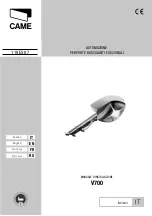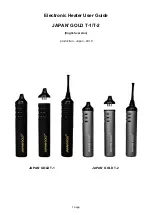
16
17
DC TIG Welding
The DC power source uses what is known as DC (direct current) in which the main elec-
trical component known as electrons flow in only one direction from the negative pole
(terminal) to the positive pole (terminal). In the DC electrical circuit there is an electrical
principle at work which should always be taken into account when using any DC circuit.
With a DC circuit 70% of the energy (heat) is always on the positive side. This needs to
be understood because it determines what terminal the TIG torch will be connected to
(this rule applies to all the other forms of DC welding as well ).
DC TIG welding is a process in which an arc is struck between a
TUNGSTEN electrode and the metal work piece. The weld area is
shielded by an inert gas flow to prevent contamination of the tung-
sten, molten pool and weld area.
When the TIG arc is struck the inert gas is ionized and superheat-
ed changing it’s molecular structure which converts it into a plasma
stream. This plasma stream flowing between the tungsten and the
work piece is the TIG arc and can be as hot as 19,000°C. It is a very
pure and concentrated arc which provides the controlled melting of
most metals into a weld pool. TIG welding offers the user the greatest
amount of flexibility to weld the widest range of material and thickness
and types. DC TIG welding is also the cleanest weld with no sparks
or spatter.
LIFT ARC IGNITION for TIG (tungsten inert gas) Welding
Lift Arc is a form of arc ignition where the machines has low voltage on the electrode to only a few volts, with
a current limit of one or two amps (well below the limit that causes metal to transfer and contamination of the
weld or electrode). When the machine detects that the tungsten has left the surface and a spark is present,
it immediately (within microseconds) increases power, converting the spark to a full arc. It is a simple, safe
lower cost alternative arc ignition process to HF (high frequency) and a superior arc start process to scratch
start.
arc ignition
established
TIG arc
gas flow
The intensity of the arc is proportional to the current that flows from the
tungsten. The welder regulates the welding current to adjust the power
of the arc. Typically thin material requires a less powerful arc with less
heat to melt the material so less current (amps) is required, thicker
material requires a more powerful arc with more heat so more current
(amps) are necessary to melt the material.
30%
70%
high
current
low
current
power source
argon gas
nozzle
Lay the nozzle on the job
without the tungsten touch-
ing the work
Rock the torch sideways so
that the tungsten touches
the work & hold momentarily
Rock the torch back in the
opposite direction, the arc
will ignite as the tungsten
lifts off the work
Lift the torch to maintain
the arc
tungsten touches
the work
tungsten off the
work
















































